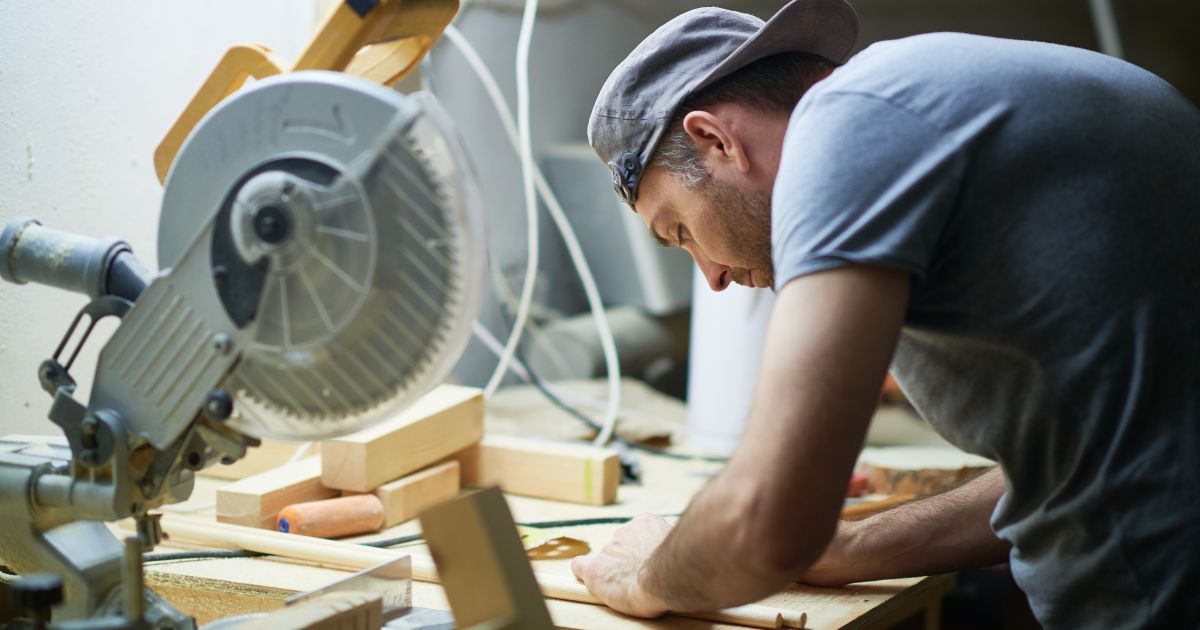Embarking on the path of woodworking can be an exciting venture for many. It’s a hobby that not only allows for creative expression but also demands a certain level of skill and the right set of tools. This guide aims to equip beginners with the knowledge needed to select the appropriate tools and set up their woodworking journey.
Essential Hand Tools for Beginners
Cutting Tools
At the heart of woodworking are cutting tools. A hand saw is a must-have for any beginner. It’s versatile and can handle a variety of cuts. For more delicate cutting work, a hacksaw is invaluable. These tools are affordable and easy to use, making them ideal for those just starting.
Shaping Tools
Shaping wood is a fundamental aspect of woodworking. Chisels and a hand plane are essential for this. Chisels come in various sizes and shapes, ideal for carving and shaping. A hand plane is used for smoothing and flattening wood surfaces, a critical step in many projects.
Fastening Tools
Joining pieces of wood together is an integral part of woodworking. A durable hammer and a set of screwdrivers are indispensable for this purpose. They are used for driving nails, fitting parts, and assembling projects.
Measuring and Marking Tools
Precision is key in woodworking. For accurate measurements, a tape measure is essential. A carpenter’s square ensures right angles and straight lines, and a spirit level helps in maintaining level and balance in your projects.
Introduction to Power Tools
The Basics
When you’re ready to step up your game, power tools come into play. A power drill is versatile and can be used for drilling holes and driving screws. A circular saw makes cutting larger pieces of wood quicker and more accurate than a hand saw.
Advancing Your Skills
For more intricate work, a jigsaw is a great addition. It allows for cutting curves and complex shapes. An orbital sander is another essential tool, helping to achieve a smooth finish on your work much more efficiently than manual sanding.
Safety First
It’s imperative to use power tools with care. Understanding their operation and wearing appropriate safety gear is crucial to prevent accidents.
Setting Up Your Workspace
Creating a Workbench
A workbench is the foundation of any woodworking workspace. It provides a stable surface for your projects. There are many DIY options available that can be tailored to your space and needs.
Organizing Your Tools
Organizing your tools is vital for a smooth workflow. Tool storage solutions like toolboxes, pegboards, and cabinets can help keep your space tidy and your tools readily accessible.
Safety Equipment for Woodworking
Personal Protective Equipment
Personal safety cannot be overstressed. Safety glasses protect your eyes from sawdust and debris. Ear protection is important when using loud power tools, and dust masks are crucial for respiratory protection, especially when sanding.
Safe Practices
Adhering to safety practices in your workshop is essential. This includes understanding how to handle tools safely, keeping your workspace tidy, and being aware of your surroundings when using tools.
Tool Maintenance and Care
Keeping Tools in Shape
Well-maintained tools are more efficient and safer to use. Regularly sharpening chisels and caring for saws ensures they remain in good working condition and extends their lifespan.
Storage and Longevity
Proper storage of your tools can prevent damage and deterioration. Store them in a dry place to prevent rust and keep them organized for easy access.
Budgeting for Your Tools
Starting Within Your Means
Starting out in woodworking doesn’t have to break the bank. Prioritize purchases based on the projects you plan to tackle. There are many budget-friendly tool options that don’t compromise on quality.
When to Invest More
As your skills develop, you may find the need to upgrade your tools. Investing in higher-quality tools can be a long-term saving as they often offer better performance and longevity.
Learning Basic Woodworking Skills
Fundamental Techniques
Understanding basic techniques like making straight cuts, curved cuts, and simple joinery is crucial. Start with simple projects to hone these skills.
Practice Projects
Simple projects like a birdhouse, a small box, or a basic shelf can provide valuable practice. These projects help in understanding basic construction techniques and the use of different tools.
Expanding Your Tool Collection
As Your Skills Grow
As you become more comfortable and skilled, you might consider adding more advanced tools to your collection, like a router or a compound miter saw for more complex projects.
Specialty Tools
Specialty tools can be added as you start tackling more specific projects. Tools like a wood lathe or a band saw open up new possibilities in woodworking but are best acquired once you have a solid foundation in the basics.
Your Journey Woodworking Expertise
Woodworking is a journey that starts with understanding and acquiring the right tools. This guide provides a roadmap for beginners to start their woodworking journey with confidence. With the right tools and a bit of practice, you can turn simple pieces of wood into beautiful creations.
Additional Resources
For those looking to expand their knowledge, there are numerous online tutorials, books, and community forums dedicated to woodworking. These resources can provide additional guidance and inspiration as you progress in your woodworking journey.


